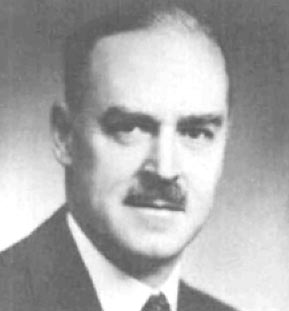
(1887-1973)
Between the two world wars there was a generation of anaesthetists who laid the basis not only of sound clinical practice but also of academic and organized anaesthesia in Canada. One of these was Harry James Shields, a much loved and respected Toronto physician.
Harry Shields was a native and lifelong resident of Toronto. Following his schooling in Markham, Ontario, he enrolled in the University of Toronto, graduating with the B.A. in 1909. Medical studies at the University led to the M.B. in 1911. He then interned in New York and returned to Toronto to take up general practice. In 1914, because of his interest in anaesthesia, he was appointed Assistant in the department of anaesthesia at Toronto General Hospital – where, except for the war years, he spent the rest of his career until he retired in 1960.
With the advent of war Shields promptly joined the Royal Canadian Army Medical Corps, soon being appointed Anaesthetist to No.4 (University of Toronto) Canadian General Hospital. His war years were spent in Salonika (1915-17) and England (1917-19). In Salonika, after anaesthetizing King Peter of Serbia, he was awarded the Order of St. Sava; in England, after courting Cecil Oatman, he married. He and his wife had two children.
Military service matured Shields, who brought back to Canada not only new anaesthetic techniques (e.g., tracheal intubation) but also strong administrative skills. On his return to Toronto in 1920 – the year the Canadian Society of Anaesthetists was founded – he became one of the first to practice anaesthesia full time. Shields soon came to earn the respect of his colleagues and, after Dr Samuel Johnston resigned the chairmanship of the Toronto department in 1935, he took over. As chairman until 1953 he provided a link between those anaesthetists who, like himself, strengthened Canadian anaesthesia after the first world war and those who did so after the second.
In his four-decade career Shields made important contributions to the development of Canadian anaesthesia. First, as head of the university department in Toronto, he established the first residency programme in Canada and did much to foster postgraduate education in anaesthesia in Canada. Second, by lecturing and publishing on a variety of anaesthetic topics, including clinical management, teaching and the history of Canadian anaesthesia, he kept anaesthetists informed on advances in anaesthesia. Next, through his close relationship to prominent American anaesthesiologists – Shields was a founding member of the select Anaesthetists’ Travel Club – he was one of that group of dedicated and enthusiastic physicians who, in sharing knowledge and ideas, greatly advanced the development of anaesthesia as a medical specialty in North America. As well as enhancing the standards of clinical practice and teaching, he did much for organized anaesthesia in Canada: he was a member of the Canadian Society of Anaesthetists in 1920, chairman of the Section of Anaesthesia of the Canadian Medical Association, chairman also of the Section of Anaesthesia of the Toronto Academy of Medicine, and he was a founding member of the Canadian Anaesthetists' Society, of which he was elected President in 1949. His contributions were recognized by his colleague in 1962, when the Society awarded him its Gold Medal.
Harry Shields practised at a time when Canadian anaesthetists enjoyed close relationships with anaesthetists in the United States and the United Kingdom. His vice presidency of the American Society of Anesthesiologists in 1948 indicated his reputation in the United States; his election as a Fellow of the Faculty of Anaesthetists of the Royal College of Surgeons in the same year reflected his standing in England.
In Canada itself, the quintessence of the dedicated anaesthetist resided in Harry Shields. It is good that his name is perpetuated in an Annual Lecture perpetuated in the University of Toronto, so that it can be remembered and appreciated by those who follow in his footsteps.
David A.E. Shephard MB FRCPC, Saskatoon
CANJ ANAESTH 1994 / 41:3 / p261